Uncategorized
To Combat Iran’s Assassination Attempts, the US Must Project Strength

Iranians take to the streets during nationwide rallies on Nov. 4, 2025, marking the anniversary of the 1979 takeover of the US embassy by waving flags and chanting “death to America” and “death to Israel.” Photo: Screenshot
“It is highly relevant that this was a cross-border crime,” declared US Federal judge Colleen McMahon, regarding an Iranian assassination attempt on US soil.
She added, “It is highly relevant that foreign citizens who were agents of a foreign power conspired to commit, and tried to commit, and almost succeeded in committing, a murder inside the United States — where, presumably, an American citizen like Ms. Alinejad should be safe in her own home.”
The context: In 2022, an assassin dispatched by agents of Tehran stepped onto the Brooklyn porch of Iranian American dissident Masih Alinejad.
Fortunately, the attempted murderer — Khalid Mehdiyev — failed to achieve his goal. Alinejad was on a Zoom call at the time, and didn’t answer the door.
After his arrest, Mehdiyev pled guilty to attempted murder, and awaits sentencing. In late October, the two agents who hired him, Rafat Amirov and Polad Omarov, faced justice, receiving 25-year prison terms at McMahon’s orders.
The judge’s statement reflects her understanding of the longstanding ambitions of the Islamic Republic of Iran — and it points to the vulnerability of the United States to attacks on its soil.
In fact, according to the US State Department, Tehran has killed hundreds of dissidents in more than 40 countries since the 1979 Islamic Revolution. The Trump administration should not forget that the Iranian threat to the US homeland remains real and ongoing — and that a posture of strength constitutes the best way to combat it.
Iran’s malignant ambitions have always transcended its borders, reflecting the regime’s authoritarian and revolutionary creed.
Tehran seeks not only regional hegemony, but also global leadership rooted in its radical, pan-Islamist interpretation of Shiite Islam. Its assassination attempts have spanned the entire globe, including Saudi Arabia, Kuwait, Bahrain, Pakistan, Turkey, Cyprus, Iraq, India, Azerbaijan, France, Austria, Germany, Iraq, Belgium, the Netherlands, Austria, Switzerland, Thailand, and the Philippines, among others.
“The Islamic Revolution does not have any borders,” said Ahmad Qolampour, a senior official of the Islamic Revolutionary Guard Corps (IRGC), which has committed the bulk of the assassinations, in 2016. The paramilitary force, he added, “does not have the word ‘Iran’ in its title. This means that it seeks to defend the Islamic Revolution and its achievements without regard to particular borders.”
Qolampour understood his marching orders. As the Islamic Republic’s constitution states, the IRGC seeks to fulfill “the ideological mission of jihad in God’s way; that is, extending the sovereignty of God’s law throughout the world.” Or, as the late Ayatollah Ruhollah Khomeini, the Islamic Republic’s first supreme leader, said, “Islam is a sacred trust from God to ourselves and the Iranian nation must grow in power and resolution until it has vouchsafed Islam to the entire world.”
How does Iran choose its targets? The regime’s decisions often stem from its perception of the value and prominence of the potential victim, frequently selecting well-known dissidents — like Alinejad — whose death could send a deterrent message to like-minded individuals.
At the same time, in the absence of a clear organizing calculus, Tehran also attacks obscure or little-known dissidents — sending a message that nobody is impervious to the long arm of the Islamic Republic. In so doing, Iran seeks to sap the resolve of all dissidents, both at home and abroad, who continue resisting the regime.
Perhaps more importantly, Tehran’s decisions also emerge from its conception of an assassination’s likely political fallout. If the target appears unwilling or unable to exact retribution, or if Tehran judges that a government’s reprisals would not be painful, prospects for assassinations rise. All too often, particularly in Europe, governments have chosen to offer token condemnations of Iranian assassinations without taking significant countermeasures, thereby emboldening Tehran.
Thus, Iran has rarely targeted the United States. After all, America maintains a powerful security infrastructure geared toward discovering and foiling potential plots and thwarting other Iranian illicit activities, such as sanctions-busting and export control violations.
This reality, along with Iran’s fear of US retaliation, likely explains why Tehran has carried out only two successful assassinations in America prior to its attempted murder of Alinejad — and those were way back in 1980 and 1992. An additional foiled attempt occurred somewhat more recently: In 2011, America charged two agents of Tehran with plotting to assassinate the Saudi ambassador to the United States at a restaurant in Washington DC.
And the 2022 assassination attempt against Alinejad was hardly the first or last time that Iran targeted her. In 2021, for example, the United States unsealed an indictment alleging a plot by Iranian intelligence officials, beginning in at least June 2020, to kidnap the activist and take her back to Iran. And in November 2024, the US Department of Justice announced another murder-for-hire plot and related charges against three men engaged in an IRGC-directed plot to kill Alinejad.
What emboldened Tehran to target Alinejad after years of reluctance to traverse US soil? The answer remains unclear. But the timing may be instructive.
At the start of the first plot, a US election was on the horizon, with the possibility that President Donald Trump would soon leave office. And during the second and third plots, President Joe Biden had been advancing an extraordinarily conciliatory policy toward Iran.
In all three cases, Iran’s decisions to act when it did may have stemmed from its perception that Washington lacked the will to retaliate. In particular, Trump’s preoccupation with remaining in office potentially led Tehran to believe, rightly or wrongly, that he sought no new conflict with Iran. Biden, for his part, sedulously sought the revival of the 2015 nuclear deal, formally known as the Joint Comprehensive Plan of Action (JCPOA), which Trump had abandoned in 2018. To achieve this goal, Biden lifted key sanctions on Iran, refused to enforce many sanctions still on the books, and failed to take meaningful action against Tehran’s aggression in the Middle East.
In response, the Islamist regime likely concluded that it had golden opportunities.
Biden’s efforts to resuscitate the JCPOA failed. And to its great credit, the Trump administration rendered the accord largely irrelevant when it bombed Iran’s nuclear facilities in June, restoring the posture of US strength that Biden had dismantled. The agreement became effectively dead when Trump triggered the reimposition of United Nations sanctions on Iran in September (though as of right now, it’s unclear how sanctions against Iran’s nuclear program will play out).
But the case of Alinejad offers a lesson: When Washington lowers its guard against Iran, the regime feels emboldened to strike, harnessing its founding impulses to eliminate those who stand in the way of its violent ideological agenda — no matter where they may reside.
Tzvi Kahn is a research fellow and senior editor at the Foundation for Defense of Democracies. Follow him on X @TzviKahn.
Uncategorized
How hundreds of forgotten klezmer tunes have been rescued from oblivion

More than one thousand klezmer tunes, some dating back to the late 19th Century, are being performed and recorded after sitting in a library in Kiev for years, thanks to the nonprofit Klezmer Institute.
“This increases European klezmer music by fourfold over what was accessible before,” Christina Crowder, the New Haven-based accordion player who heads the institute, told me, adding that the collection ranges from virtuosic solo pieces to “workaday, regular old tunes.”

Digital photos of hundreds of pages of sheet music arrived on a memory stick at the Yiddish New York gathering in 2017, but the crowd-sourced effort to turn them into PDF files and share them on the web didn’t get going in earnest until late 2020. In the last couple of years, several albums featuring the resurrected klezmer tunes have been recorded. Crowder estimates that at least 72 musicians have digitized at least one tune for what has been dubbed the Kiselgof-Makonovetsky Digital Manuscript Project (KMDMP).
The project is working with a total of close to 1,400 tunes from two different sources: 26 notebooks of melodies collected by Zusman Kiselgof, a Russian folklorist who participated in the seminal An-ski ethnographic expeditions, and a 236-page manuscript by Avraham Yehoshua Makonovetsky, a Russian klezmer violinist who played at Jewish weddings. Both Kiselgof and Makonovetsky were Jews. The notebooks and the manuscript had been sitting in the Vernadsky National Library of Ukraine.
“This is of incredible value,” Lyudmila Sholokhova, curator of the Dorot Jewish Collection at the New York Public Library, told me. She inventoried the Edison wax cylinder recordings of the Kiselgof collection when she worked at the Vernadsky and wrote her doctoral dissertation on early efforts to collect Jewish music in the Russian Pale of Settlement.
“This is a lot of unknown music and it also gives you a good idea how this music was actually played,” she said of the Kiselgof-Makonovetsky collection. A small number of the tunes has been circulating in recent years before the KMDMP began.
The mixed blessing of COVID
The COVID lockdown turned out to be a blessing for the KMDMP because klezmer musicians were unable to play gigs or rehearse with their bandmates. So, they went to work digitizing the klezmer treasure trove.
“In the beginning during lockdown, you couldn’t go out to a gym, you couldn’t go play music with people. In the evening you can’t practice at home because there are neighbors. So, you digitize tunes,” Hannah Ochner told me.
The German klezmer clarinetist now lives in England and fronts a klezmer ensemble called Hop Skotshne. Ochner, 33, has a PhD. in physics and her main gig is researching electron microscopy in Cambridge. But she still found time to digitize an estimated 600 tunes over the course of a year and a half.
“It became addictive,” she said.

One of the untitled tunes Ochner worked on was a skotshne, a lively klezmer dance melody. The digital photo she worked from depicted a crumpled page, necessitating quite a bit of reconstruction.
“The length of the notes I left was longer than the music score,” she said.
The tune, Hannah’s Skotshne, was named in her honor.
Crowder said some of the hand-written scores were “a real mess.”
“You have to be a special kind of nerd to want to dive into this stuff,” she told me. “You’ve got four tunes crammed on the page and there’s mistakes and there’s all kinds of random old school notation.”
Crowder estimates that in addition to klezmer nerds like Ochner, a pool of more than 200 volunteers has helped by translating Russian or Yiddish text on sheet music or joined bi-weekly Zoom sessions where musicians play along with Crowder as she goes through tunes on her accordion.
The KMDMP now has at least a thousand klezmer melodies available for download as PDF’s, and Crowder said there are plans to publish a scholarly edition of some Kiselgof-Makonovetsky tunes as bound volumes. The Klezmer Institute is also planning to commission piano accompaniments for the many virtuosic solo violin pieces in the collection.
“They would be a lot of fun for a classically trained violinist to approach and to put into their own repertoire,” said Crowder. “Violin players don’t want to play clarinet pieces because they’re clarinet pieces.”
Music with global appeal
The KMDMP repertoire has been spreading at klezmer festivals in Europe and North America. The New York-based trumpeter Jordan Hirsch has passed them on to students at KlezKanada and Yiddish New York. Susi Evans and Szilvia Csaranko, a klezmer duo based in the UK and Germany, have taught the tunes at Shtetl Berlin jam sessions and Yiddish Summer Weimar, Europe’s major klezmer and Yiddish culture gathering.
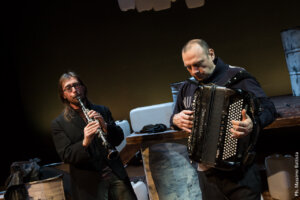
Csaranko, an accordion player, is the musical director of Klezmerorchester Erfurt, an 80-piece amateur ensemble in Germany that performed a concert of the Kiselgof-Makonovetsky repertoire in 2022 before an outdoor audience of 3,000.
Evans, a clarinetist who has performed as a soloist with the BBC Scottish Symphony Orchestra, told me: “If you’re teaching klezmer music regularly, you’re always looking for tunes that someone who’s come into the workshop and knows a lot of tunes, won’t know.”
Their double CD, Fun an Altn Klezmer Heft, features 44 Kiselgof-Makonovetsky tunes, including “Hannah’s Skotshne.”
“Wherever we go, we like to spread these melodies,” Csaranko told me. “People do play these melodies they heard from us in jam sessions, in different countries. People in Australia are playing them now because they were in our workshop.”
The classically-trained clarinetist Angelo Baselli in Bologna, Italy teamed up with the accordionist Gianluca Casadei to record Fun a Velt Vos iz Nishto Mer, Of a World That Is No More. The album features Kiselgof-Makonovetsky tunes.
In a telephone interview Baselli, 47, said he caught the klezmer bug nearly 30 years ago after listening to Don Byron Plays the Music of Mickey Katz.
“I don’t have a Jewish family but instantly I fall in love with that music,” Baselli told me. “I started to search for recordings but at that time it was a little bit hard because there wasn’t a klezmer movement in Italy.”
A musical heirloom
Two klezmer trios in the Bay Area of Northern California have Kiselgof-Makonovetsky tracks on their most recent albums, both on the Borscht Beat label. Baymele’s album is Sapling. The new Veretski Pass album, The Peacock and the Sunflower, has eight Kiselgof-Makonovetsky numbers.
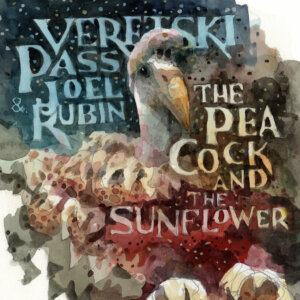
The Veretski Pass accordion player, Josh Horowitz, actually went to Ukraine before the KMDMP began and brought back some of the klezmer tunes from the collection.
“They were passed around like contraband at festivals,” the band’s violinist, Cookie Segelstein, said.
Their trio is named for a mountain pass in Ukraine where Segelstein’s father was born. Her mother grew up 45 miles away in the town Munkacs, where the Munkacher Hasidic sect began. So, for Segelstein, the archive of Kiselgof-Makonovetsky tunes is like a family heirloom.
“I have no way of going back to Veretski or where my mom is from and seeing her home because it was either destroyed or other people lived there,” she told me.
Describing the process of going through the unearthed klezmer tunes, Segelstein said: “We were digging through ashes. We would never have had this kind of access to this many historical tunes. To have this trove in one place has been like winning the lottery.”
The post How hundreds of forgotten klezmer tunes have been rescued from oblivion appeared first on The Forward.
Uncategorized
An activist Jewish artist who used his work to fight fascism
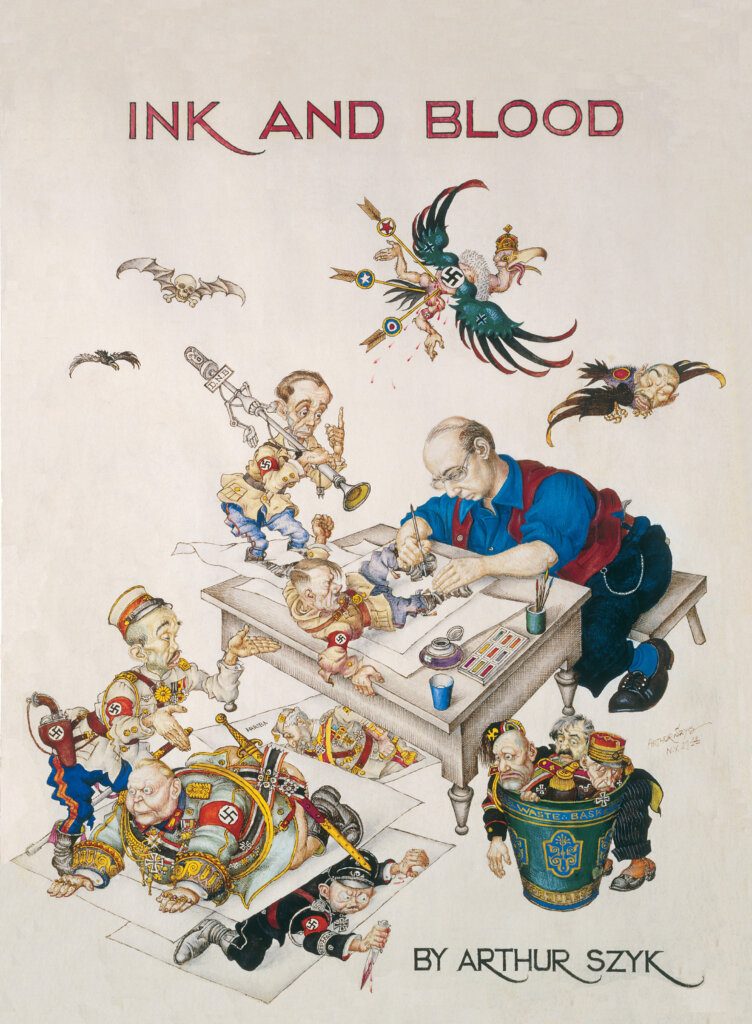
The heroic image of George Washington standing in a boat as it cuts through the icy Delaware River on Christmas Eve in 1776 is etched into the collective American consciousness. But when Polish-born political artist Arthur Szyk painted the scene in 1942, he recast it for a nation at war.
In his Washington Crossing the Delaware, the soldiers are not uniform. Instead, they reflect a diverse America, where freedom and protection belong to everyone. Intricately detailed, the richly pigmented painting is one of more than 100 works by Szyk on view in Art of Freedom: The Life and Work of Arthur Szyk at New York City’s Museum of Jewish Heritage. The exhibition pulls together rarely seen material into public view as the United States approaches the 250th anniversary of its founding.

“What makes this exhibition and celebration of Arthur Szyk important for 2026 — 250 years on from the American Revolution and subsequent Declaration of Independence — is how he framed freedom as something to fight for. He loved America and was granted citizenship in 1948,” said Sara Softness, the museum’s director of curatorial affairs. “The title ‘Art of Freedom’ has a double meaning: not only that the artist made pictures about or featuring themes of democratic ideals, anti-Fascism, and pro-pluralism, but that freedom itself is a practice, a metier, a life’s work.”
Born in Łódź, Poland in 1894, Szyk experienced major upheavals of the 20th century: two world wars, the rise of totalitarianism, and Nazism, the founding of the State of Israel, McCarthyism, as well as deeply entrenched American racism and antisemitism.
After Germany invaded Poland in 1939, he, his wife and two children fled to London, ultimately immigrating to the United States in 1940.
While Szyk was an established artist when he arrived in the U.S., most Americans first encountered him through the lavishly illuminated Szyk Haggadah. Completed in Poland in the 1930s and published in London in 1940, The Times of London praised the work as “worthy to be placed among the most beautiful of books that the hand of man has ever produced.”
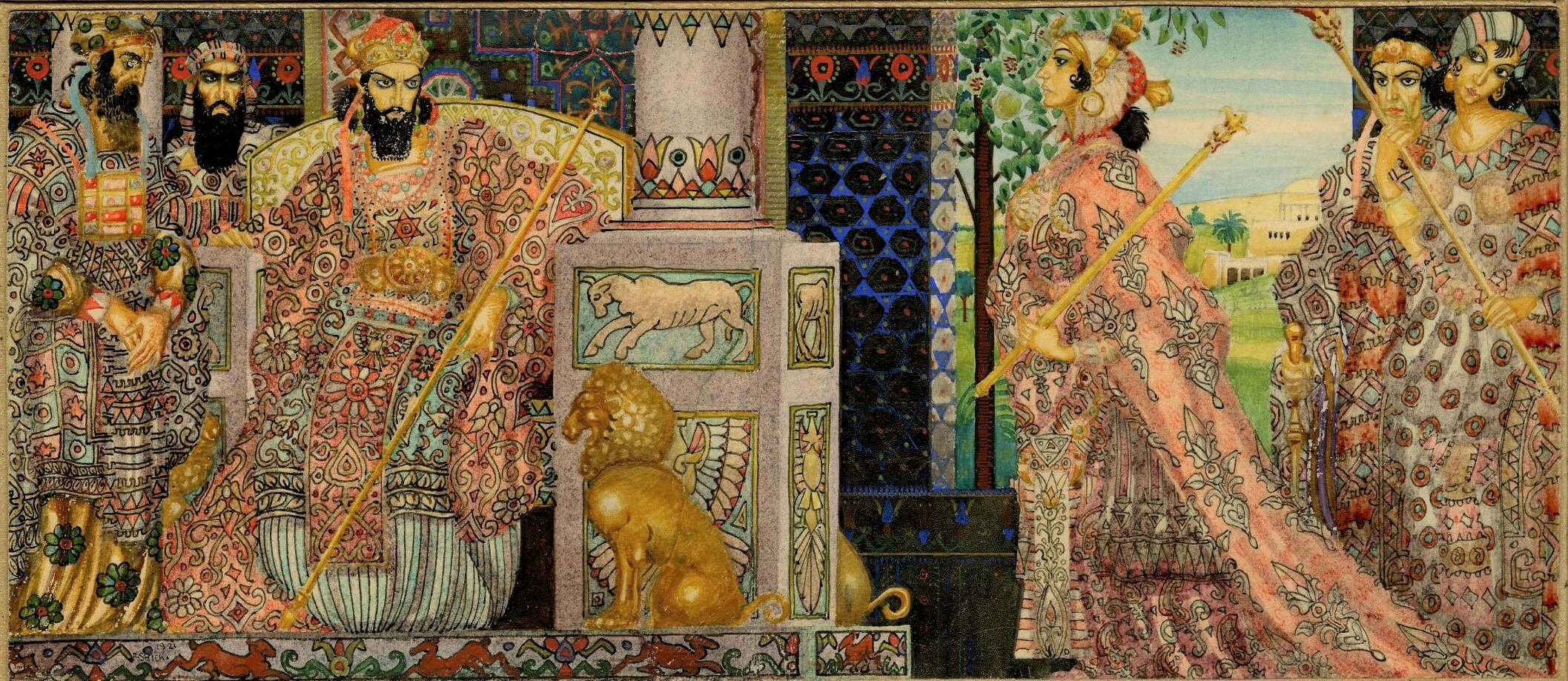
Running through July 26, 2026, the show includes 18 never-before-seen pieces and 38 original works, the majority of which are on loan from Irvin Ungar, a rabbi-turned-antiquarian.
The show includes commercial cartoons Szyk produced for Collier’s Magazine and illuminated manuscripts, as well as his 1928–1929 sketchbook for the Washington and His Times series. Visitors get an up close look at the painstaking labor required to accurately show pivotal battle scenes from the American Revolution as well as Szyk’s efforts to draft the highly specific weaponry and military dress of the Revolution’s fighters.
A fierce anti-fascist, themes of military might pervaded Szyk’s works throughout World War II.
This is never more evident than in his 1942 suite illustrating the Four Freedoms that hung in President Franklin D. Roosevelt’s White House. Each miniature, on display for the first time in 80 years, portrays a medieval knight on a quest to secure Roosevelt’s four essential freedoms — Speech, Religion, Want and Fear.
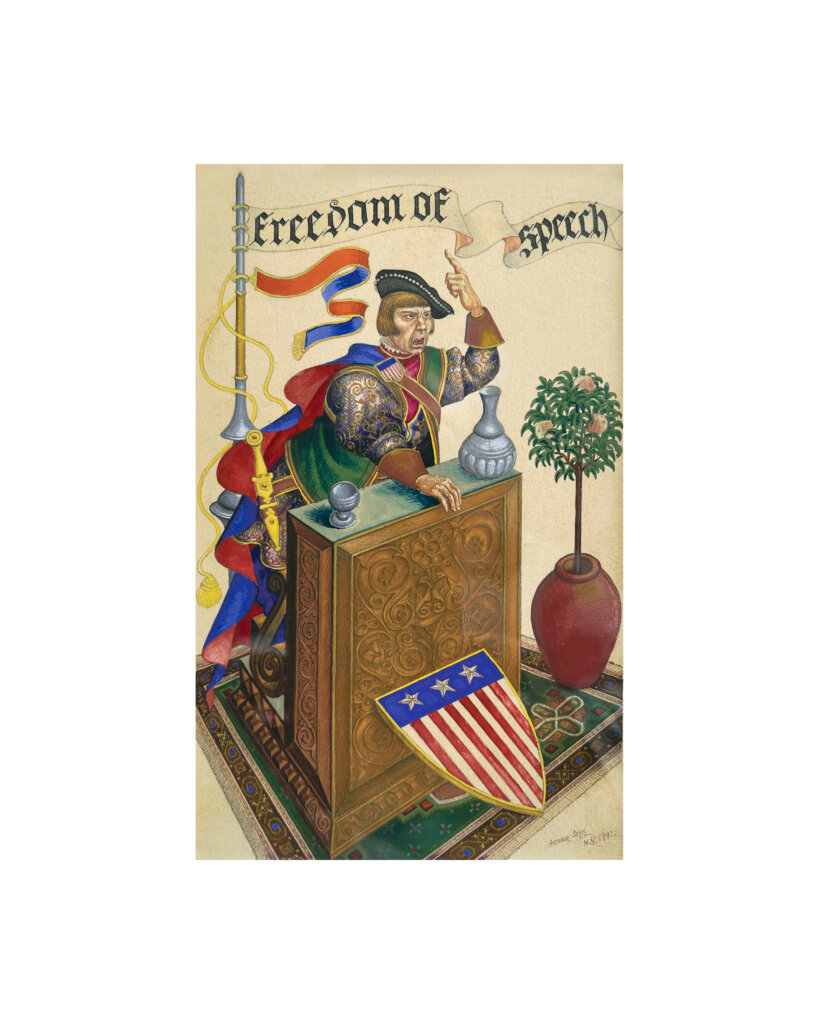
Freedom of Speech shows the knight wearing a red and blue cape pounding a lectern as he speaks freely; a shield embossed in the colors of the American flag rests nearby. In Freedom from Want, abundant food surrounds the knight, in Freedom of Religion he kneels in prayer and in Freedom of Fear he charges into battle.
Many of Szyk’s works meld American ideals with his firm belief that the government must do all it can to rescue Jews. During this period, many of his miniatures were sold as stamps and posters to generate much needed wartime funds. In this way, Szyk not only highlighted the fight against the Nazis, he cemented the defense of these freedoms as a moral obligation for all Americans.
“The exhibition is a portrait of a person who, with his pen, inks and gouaches, never put down the fight — whether for Allied victory or Jewish salvation or, what his career embodied so thoroughly, for freedom of expression,” Softness said.
The latter eventually drew the glare of the House Un-American Activities Committee. Szyk was primarily investigated for his works that challenged racism, whether it was highlighting the experience of Black veterans during World War II or the segregationist policies of the South, as well as his outspoken support for Jewish refugees.
Like the medieval knight he depicted in Freedom from Fear, Szyk charged ahead. Indeed he threw down the gauntlet in his 1951 piece, Thomas Jefferson’s Oath.
The jewel-toned work illuminates Jefferson’s famous quote: “I have sworn upon the altar of God eternal hostility against every form of tyranny over the mind of man.”
74 years after he died in his home in New Canaan, Szyk’s legacy endures.
“He refused to dilute identity or politics. He worked loudly, explicitly, and without apology — a proud American, a committed Jew, and a relentless defender of civil rights,” Softness said.
The post An activist Jewish artist who used his work to fight fascism appeared first on The Forward.
Uncategorized
Israel’s Top Diplomat Calls on Jews to Make Aliyah Amid Global Surge in Antisemitic Violence

Israel’s Foreign Minister Gideon Saar attends a press conference with the Danish Foreign Minister (not pictured) in Jerusalem, Sept. 7, 2025. Photo: Ritzau Scanpix/Ida Marie Odgaard/via REUTERS
Amid a global surge in antisemitic violence, Israeli Foreign Minister Gideon Saar has urged Jews living abroad to make aliyah to Israel, warning that diaspora communities are increasingly vulnerable to hatred and hostility as foreign governments fail to protect them.
“Over the past year, we have concentrated efforts in the fight against the rising antisemitism around the world,” Saar said Sunday during a Hanukkah candle-lighting event in Rishon LeZion, a city in central Israel.
“We demanded that foreign governments take real steps against the new antisemitism. Few did so. Most allowed an unrestrained surge of overt antisemitism in the public sphere,” the top Israeli diplomat continued.
Saar’s latest remarks come in the wake of a deadly attack on a Hanukkah celebration at Sydney’s Bondi Beach last Sunday, which left 15 dead and at least 40 injured.
Earlier this year, a string of deadly terrorist attacks also targeted Jewish communities, including the Yom Kippur assault in Manchester that killed two Jewish men, the firebombing of a march for Israeli hostages in Boulder, Colorado – which killed one and injured 13 – and the murder of two Israeli Embassy staffers in Washington, DC.
“Jews have the right to live in safety everywhere. Today, Jews are being hunted across the world. Today I call on Jews in England, Jews in France, Jews in Australia, Jews in Canada, Jews in Belgium: come to the Land of Israel! Come home!” Saar said during his speech.
“We are waiting for you here with open arms. With love. In the true home of the Jewish people. Why raise your children in this atmosphere?” the Israeli diplomat continued. “Come with your families to the land of our forefathers, to the State of Israel, where the Jews taught the entire world what Jewish self-defense means. The time has come.”
Jewish communities around the world, especially in Europe, have faced a troubling surge in antisemitic incidents and anti-Israel sentiment since the Hamas-led invasion of and massacre across southern Israel on Oct. 7, 2023.
Jewish leaders have consistently called on authorities to take swift action against the rising wave of targeted attacks and anti-Jewish hate crimes, ranging from the vandalism of murals and businesses to violent physical assaults, that their communities continue to face.
In the United Kingdom, more than half of British Jews — 51 percent — believe they have no long-term future in the country or elsewhere in Europe, according to a survey conducted by the Campaign Against Antisemitism, released Monday.
Amid this climate of rising hostility, almost half of British Jews (45 percent) report feeling unwelcome in the UK, while a majority (61 percent) have considered leaving the country in the past two years, citing the recent surge in antisemitism as the main reason.
The newly released report also found that 59 percent of British Jews try to avoid displaying visible signs of their Jewish identity out of fear of antisemitic attacks, while 96 percent believe that Jews in Britain are less safe now than they were before the Oct. 7 atrocities.
Fewer than one in ten British Jews believe authorities are doing enough to tackle antisemitism, with only 14 percent feeling that the police are adequately protecting them.
In France, the local Jewish community has also faced a growing climate of hostility and antisemitic violence, which has even extended into politics, sparking national debates and drawing condemnation from leaders and civil society groups.
In one of the latest controversies, Bernard Bazinet, the mayor of Augignac in the southwestern Dordogne region, was expelled from the French Socialist Party earlier this month after posting antisemitic comments online about Israel’s participation in the Eurovision Song Contest.
“France is too Jewish to boycott [Eurovision]!” Bazinet wrote in a post on Facebook.
French Interior Minister Laurent Nuñez strongly condemned Bazinet’s comments, warning that he could face sanctions ranging from suspension to outright dismissal.
However, the rising wave of antisemitic attacks and hatred has spread beyond Western countries, reaching nations across the Eastern Mediterranean and other regions worldwide.
On Sunday, a group of Jews in Istanbul were attacked by pro-Palestinian protesters while on their way to light the eighth and final Hanukkah candle at the Neve Shalom synagogue.
According to widely circulated social media videos, the attackers approached the group while shouting, “These Zionists should leave this country,” waving Palestinian flags as they tried to get closer.
In a separate incident over the weekend, an Israeli man was attacked outside the hotel where he was staying in Limassol, Cyprus, after assailants reportedly heard him speaking Hebrew on the phone.
According to the victim’s father, his son was talking on the phone when a man approached him, asked for a cigarette, and then brutally assaulted him.
The victim was rushed to a local hospital and then flown to Israel on Sunday for emergency eye surgery after the attack, but doctors were unable to save his vision.
“My son, a young Israeli, was violently attacked at the entrance to the hotel where he was staying in Cyprus. Not on the street, not in a bar. At the entrance to the hotel — a place that is supposed to be safe and secure,” the victim’s father wrote in a post on Facebook. “He was brutally beaten, injured in the head and face, and evacuated for medical treatment.”


